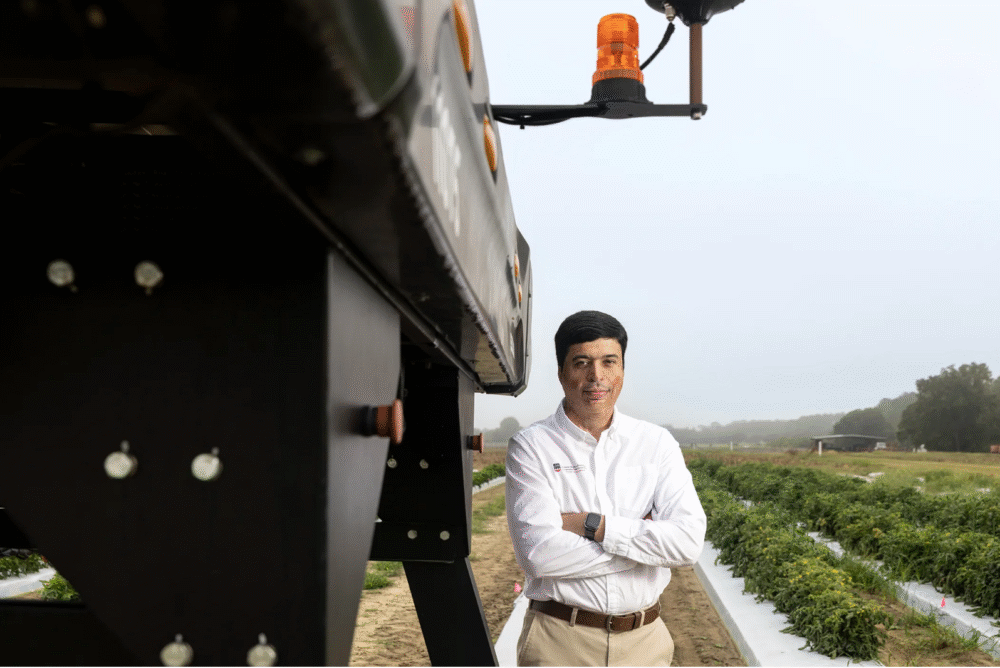University of Georgia
Georgia farmers grow more vegetables than Georgians can eat
each year. The extra is shipped and sold to other places. But
there’s one big place farmers haven’t shipped to that could
bring them and Georgia’s economy more money in the future.
When it comes to vegetables, it’s all about timing. And the
time is right for Georgia vegetable farmers to sell their
produce to consumers around the world. Something they’ve done
little of in the past, says Greg Fonsah, a University of
Georgia Extension Service vegetable economist.
Nibbling numbers
Georgia’s mild climate allows farmers to grow vegetables
virtually year-round. As a result, Georgia’s vegetable
production has steadily grown since the mid-1980s and has
surpassed what Georgians can eat.
For example, Fonsah says Georgia farmers grow about 248.5
million pounds of cabbage annually. This is more than three
times what Georgians consume. The average Georgian eats about
8.5 pounds of cabbage a year.
Georgia farmers also produce about 176 million pounds of
cucumbers each year. Again, more than three times what is
consumed in Georgia. The average Georgian eats about 6.9 pounds
of cucumbers each year.
It’s the same for other vegetables like onions, beans and bell
peppers, Fonsah said.
Northern states and Canada are the main out-of-state buyers of
Georgia vegetables. But there’s always room for other markets,
said Kent Hamilton, a vegetable farmer in Colquitt County in
southwest Georgia.
Vegetables are very time sensitive, Hamilton said. For good
crops, farmers must plant, water and fertilize them at the
right times. And come harvest, they have to be ready to pick
and sell their crops fast. As most consumers know, veggies
don’t stay fresh long.
“We always need to look at other places to potentially sell our
produce because we are dealing with a perishable commodity that
you have to do something with,” Hamilton said. “Sometimes
markets do become saturated, and there are no places to
sell.”
World market
The global economy is, and will continue to be, driven by
consumers. And Fonsah believes it’s time for Georgia vegetables
to step onto the world stage.
But just because Georgia farmers can grow almost any vegetable,
doesn’t mean they should, Fonsah said. Georgia produces about
33 different vegetables.
“We need to concentrate on what we grow the best and the
cheapest,” he said, “and be sensitive to what consumers want to
buy. A farmer should have his crop sold before he even plants
it.”
Many Georgia farmers are listening to consumers, he said, and
now grow and package their produce accordingly. But it’s time
for more to follow suit.
The U.S. dollar has weakened over the last year, making U.S.
products, like vegetables, more attractive to overseas buyers,
Fonsah said.
The Caribbean buys about 95 percent of its vegetables from the
U.S. Fonsah recently visited the region. The only Georgia
vegetables he found were baby carrots. That’s it.
“The time is right,” Fonsah said. “It’s time for Georgia to
export more and capture some of this region’s market.”
The same could be said for other regions of the world.
Georgia’s vegetable industry is one of the largest in the
nation. It’s worth about $600 million a year. And a lot of that
vegetable money finds its way into the small, rural economies
of south Georgia, where most Georgia vegetables are grown. You
find more money for vegetables, and you’ll insert more money
into these economies, he said.
Risky
Georgia farmers are concerned about selling their produce
overseas, Fonsah said. Some feel dealing with new, foreign
buyers and the extra costs of shipping overseas is too risky
and costly. And they would have to manage their farms
differently.
“But with high risk are associated high returns,” Fonsah
said.
Georgia’s veggie growers can learn, he said, to minimize their
risks and take advantage of a world market ripe for quality
Georgia produce. And timing is everything.




